Review: LG G2 for AT&T
Sep 13, 2013, 11:51 AM by Eric M. Zeman
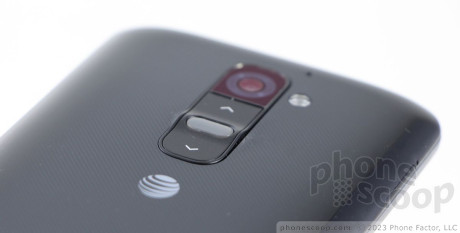
The LG G2 is a flagship smartphone that hopes to take on the Samsung Galaxy S4, HTC One, and others. It is bristling with technology, but stumbles here and there getting it all to work.
Form
Is It Your Type?
The G2 is LG's answer to the Samsung Galaxy S4, HTC One, and Apple iPhone. It's a flagship smartphone that includes every feature known to tech-kind, all wrapped in a slick shell. The G2 definitely pushes buttons, but are they the right ones? Phone Scoop digs deep to give you the answers.
Body
The LG G2 is a slim, sleek, and large smartphone. As with nearly all modern flagship phones, the big screen pushes the length and width ever-outward. LG did all it could to minimize the overall size with razor-thin bezels surrounding the screen, but it's still a big device. It's also - aside from one design element in particular - quite boring.
The G2 has the most conservative design out of all today's superphones. Nothing about the appearance, other than perhaps the size, stands out. At least the Galaxy S4 has a chrome band around the outside. The G2 is black (or white) through and through, with no sizzle or flash. It's non-discript. From more than three feet away, it looks like any other large phone on the market. Last year's flagship from LG, the Optimus G, had more personality … but that's not saying much.
I haven't seen a device this year more prone to collecting finger grime than the G2. The front surface is of course glass and the rear shell is made from plastic. Both are reflective, glossy, and slippery. I needed little more than 60 seconds to smear them from top to bottom with oils from my skin. Gross. The glass is of good quality, but I seriously question LG's choice to use such a cheap-feeling plastic for the rear shell. LG could have done a better job. I also had a hard time holding onto the G2 thanks to the slick surfaces.
There's a rather sharp edge where the display meets the side, but the side edges (if you can even call them that) taper quickly to meet the G2's back surface. This design helps make the phone easier to hold in the hand. Though it is big, it isn't uncomfortable to hold and use. The weight is noticeable, but it's not killer heavy. The G2 will slip into most pockets easily.
The display measures 5.2 inches across the diagonal and consumes the vast majority of the front surface. There are hair-width bezels on either side of the screen, and somewhat thicker ones above and below. There's a slit in the glass at the top for the earpiece speaker, and a reflective LG logo positioned below the display. There are no capacitive buttons; the G2 makes use of on-screen Android controls.
Looking for the volume toggle and screen lock button along the G2's edges? You won't find them. LG decided to break with more than a decade of smartphone design and moved them to the back surface of the G2. LG's research shows people hold their phones like this:
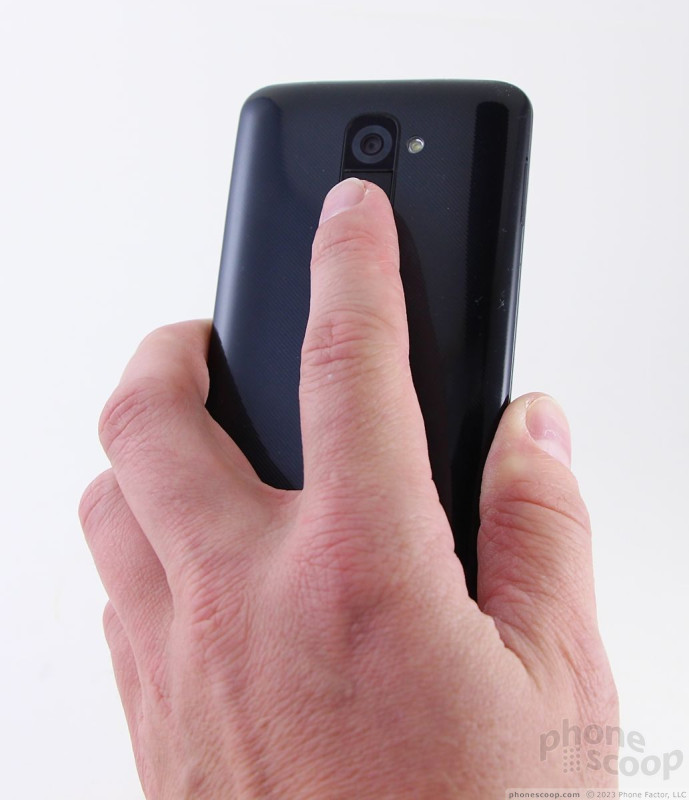
So it thought to itself, why not move the essential screen lock and volume buttons there, instead? I can't argue with LG's decision to try something different and new. Smartphones are so homogenous these days that any amount of differentiation in the hardware is appreciated. I couldn't get used to the button placement in one week. But my guess is I'd get used to it after another week or two (as would most owners.)
Placement aside, I didn't find the buttons satisfying to use at all. They are located directly beneath the camera module. With the GSM (AT&T, T-Mobile, and international) version, there's a slight hump in the surface where the buttons are. The hump's peak is the screen lock button. It's raised to help your finger find the buttons and tell them apart. Your finger has to slide downhill (if you will) to hit the volume buttons. The screen lock button requires a lot of travel and feedback to activate. The volume buttons have terrible feedback. They feel quite cheap and make an awful, hollow "clucking" (yes, with a "U") sound when pressed.
Because LG put the screen lock button on the back and also got rid of the physical Home button on the front, there's no obvious way to wake the G2 without picking the darned thing up. You can choose, however, to activate a feature called Knock On that lets you double-tap the screen to wake the device or put it to sleep. Why it's not activated out of the box is beyond me. LG touts the feature as "cool" and "hip", but due to the hardware design, most people will find Knock On quite necessary.
LG points out that the buttonless design leaves your hand free to tightly grip the phone and still use the controls on the back. I guess. It didn't feel like I had a stronger grip on the G2 when using it. However, the side edges are seamless and free from protrusions. There are no buttons sticking out. This adds to the G2's slick feel.
The LG's back cover cannot be removed. That means no swapping batteries. The GSM G2 provides access to the SIM card through a pop-out tray, but there's no expandable storage. You're stuck with either 16GB or 32GB.
Performance
Screen
LG was very excited to talk about the G2's 5.2-inch full HD display when it debuted the device in August. It said the extra 0.2 inches made a huge difference in usability when compared to the Samsung GS4, for example, which has a 5.0-inch screen. Whatever. It's slightly bigger. The 1920 x 1080 IPS LCD screen is quite beautiful to behold. It is bright, sharp, and colorful. I noticed only a little brightness drop-off when the phone is tilted side-to-side and there's no blue-shift. It can be used outdoors, but you need to crank up the brightness a bit, especially if you're planning to take some pictures. Full HD screens continue to be awesome, and the G2's is another good example or how far phones have come in the last few years.
Signal
The G2 performed well on AT&T's network. I was able to spend about half my review period on AT&T's HSPA+ network and the other half on the LTE network. The G2 remained connected tightly to both. Call set-up times (gap between pressing send and hearing the device ring) were longer than I'd like, but they always connected on the first dial. The G2 did not drop any calls. Data speeds were excellent on both HSPA+ and LTE, though they slowed down a little bit when the coverage was weak.
Sound
Sound quality of calls was quite good. I was pleased with the volume and tone of voices coming through the earpiece. Voices were perhaps a bit sharp, but not in a painful way. Set all the way up, I was able to hear calls easily in a busy restaurant during lunch hour. In fact, I could have turned it down a bit. The speakerphone loses some quality, but volume was still pretty good. I was able to hear calls over background music and several conversations. People with whom I spoke through the G2 said I sounded good, but a little distant. Ringers and alerts were plenty loud, and the haptic feedback was strong. One note: LG managed to find an email alert that's more annoying than Verizon's "DRRRROOOIIDDDD" alert. LG got the Vienna Boys Choir to sing "Life Is Good!" in their little high-pitched voices, and that's the default email alert. I found it incredibly annoying, but it can be changed.
Battery
The G2 offers acceptable battery life. It lasts a full day, despite the bright screen and quad-core processor. For a big phone with lots of features, it's nice to see a solid, waking day of battery life. Don't expect it to last much more than that, though. It'll konk out overnight if you forget to plug it in.
Basics
Menus
The G2 runs Android 4.2.2 Jelly Bean with LG's user interface customizations on top.
To start, the lock screen is fully customizable. It offers up to five shortcuts, all of which can be changed or deleted. You can also customize which clock appears on the lock screen, and whether or not weather data and other alerts are sent to the lock screen. A double-tap to the phone will wake the lock screen, so you can see the weather and alerts without unlocking the device. If you choose to set a lock for the G2, the weather and alerts are still visible, but you have to unlock the G2 before you actually interact with them.
There are six home screen panels for customization out of the box, but you can delete or add screens if you wish. There are a multitude of widgets on board and LG was sure to call attention to its newest apps with full-screen widgets that I removed straight away.
The pull-down notification shade provides shortcuts to control the wireless radios as well as brightness, rotation, sound, and LG's QSlide apps. These controls, however, take up half the display, leaving less room to view the actual notifications in the notification shade. I found that to be a bit of a backward step. LG was considerate in that it allows us to choose which toggles appear in the notification shade, but not whether we wanted any there in the first place.
The main menu is a grid of apps. LG offers plenty of flexibility as far as customizing it is concerned. You can view the main menu with large icons (default) or small icons to fit more apps on each individual page. You can sort apps alphabetically or via install date. You can't, however, view them in list form. Apps can be hidden, and, even better, there's a tool that lets you delete all the carrier-branded apps right from the main menu page in one fell swoop. Speaking of which, AT&T has plenty of their own apps and services on board.
Here's an interesting bit of customization: Since there are no physical home screen buttons, the Back, Home, and Menu buttons appear and disappear as needed at the bottom of the screen. The cool bit is, LG allows you to pick from about 6 different control button configurations, including some three-button and some four-button configurations. Some have the Back button on the left, others have the Back button on the right, and so on. The four-button configurations add in a tool that lets you access the notification shade without reaching for the top of the screen. Cool.
The AT&T G2 uses the same settings screen that I disliked on the Optimus G Pro earlier this year. Most Android devices have an easy-to-use Settings menu that's laid out on a single page. Rather than take that approach, the Settings menu has been broken down into four separate tabs (much like what Samsung did with the GS4). The four tabs in the settings menu are Networks, Sound, Display, and General. I never quite got the hang of which Settings tools were under which of the tabs. However, this set-up can be disabled, and the Settings menu can be viewed on a single page if that's how you like it. (I do, and I did.)
There's a new multitasking tool from LG called Slide Aside. It's an optional way to handle multiple open apps at the same time. Essentially, you use a three-finger gesture to push full-screen apps left to set them aside for later use. It works almost exactly as multitasking does on Apple's iPad. I find, for a phone, three-finger gestures to be ridiculous. Further, Slide Aside did not work consistently. I recommend using the home button (press-and-hold) to jump between apps.
As far as performance goes, well, the LG G2 is one of the first smartphones to ship with Qualcomm's top-of-the-line mobile processor on board, the Snapdragon 800. The 800 is a quad-core monster that promises the best in terms of both computing power and battery life. After a week with the LG G2, I can say that the 800 lives up to its promise. Not only was it incredibly fast, but 3D games looked incredible, and battery life was quite good to boot, given the size and features of the phone.
Calls and Contacts
The phone and contact apps work exactly as they do on other LG smartphones, such as the Optimus G Pro and F3, but there are some useful extras on the G2 that some people might like.
The software dialpad is large and provides tabbed access to call history, contacts, favorites, and groups. In-call options run the standard, such as add a line, send to Bluetooth, hold, reject with message, or mute. You can also open the note pad and messaging apps, or toggle on/off noise reduction (which makes calls clearer for those with whom you speak.)
LG has added software that might make it easier to answer phone calls. With the G2, simply taking the phone out of your pocket and raising it to your head will connect an incoming call. This feature, called Answer Me, can be turned on or off. I had mixed success with it. Sometimes it answered the phone too soon, and other times it answered the phone too late. It answered the phone as the G2 reached my ear only about one-third of the time. A couple of times it didn't work at all. The G2 can also be set so that calls (or alarms, etc.) are silenced when the phone is flipped over. This silencing feature worked perfectly.
There's one more neat little addition to the phone functions worth mentioning here. LG has made the phone app one of its Qslide apps (sort of miniature apps). There's a button in the phone dialer that minimizes the phone app, but leaves it open and running on top of other apps. This means you can always have the phone controls front and center while performing other tasks.
The contacts application is as powerful and customizable as ever. There are the usual home screen shortcuts for quick access to select contacts, as well as a nice widget for a collection of your favorites. The bigger widget lets you access your top nine contacts and gives you a spiffy UI for interacting with them on the home screen. Within the contact app itself, you can choose which accounts it syncs with and/or displays, how contacts are arranged, and easily lump them together into groups. As with the phone, the contact app can be minimized as one of the QSlide apps and left running on the home screen or on top of other apps if you want.
Messaging
As far as messaging goes, the G2 doesn't deviate from the Android norm. It houses all the typical Google apps: Gmail, email, SMS/MMS, Hangouts, and Google+. All of these apps functioned as designed and are well-built tools for communicating with others. The text messaging app is another app that LG added to the QSlide capable apps. This is probably the best Qslide app possible. Do you sometimes get into lengthy SMS conversations but are trying to get other things done on your phone? This is the answer.
Neither the native Facebook nor Twitter apps were pre-installed on the AT&T version, so you have to grab them from the Google Play Store yourself. Thanks to Android's built-in social networking and sharing tools, it's never hard to share anything from the G2 to the outside world.
Lastly, AT&T's catch-all messaging app is available. This app can work with AOL and Yahoo (it doesn't work with Skype), as well as SMS and visual voicemail. AT&T's messaging app is a bit clunky as far as I am concerned, but it can be helpful if you like to see everything in one spot rather than spread across various apps.
Extras
Media
The AT&T version of the G2 includes all the standard Android media apps. That includes the Google Play Store for purchasing/renting content, and the associated Play apps for listening to music, reading books, watching movies/TV shows, and so on. They are all mature apps and work well. The G2 also packages in the stock YouTube application.
AT&T wouldn't be AT&T if it didn't also toss in its LiveTV application. This app streams live and prerecorded TV shows to the G2. You can see content from the likes of CNN, FOX, Disney Channel, and so on. The video is streamed over the network (amazingly, you have to disable Wi-Fi to get it to work). As expected, it performed significantly better over LTE than HSPA+. It often paused or stuttered over HSPA+.
Lastly, the G2 also includes an infrared (IR) port and remote control application for TVs and other home A/V gear. Set-up takes about 30-60 seconds per device, and you can store up to five different "rooms" in the remote (living room, bedroom, kitchen, den, office). Each room can then control its own set of devices. The app and IR worked fine. This is a feature I really like. The G2 does not, however, come with a video content discovery app, such as WatchOn on the Galaxy S4 or viewdini on Verizon smartphones.
Camera
The G2's camera offers an abundance of features. The camera can be launched from the lock screen or the app icon. There is no physical camera button. No matter which avenue you take to turn it on, the camera launches quickly.
As with most modern smartphone cameras, the G2's software offers two sets of controls, down the left and right sides, though there's still plenty of room on the screen for the viewfinder. The left is where all the interesting settings and features are located. Five quick action items appear here. Four of them can be customized.
In terms of shooting modes, the G2 handles HDR, Panorama, VR panorama, burst shot and beauty shot. The VR Panorama is similar to Android 4.2's Photo Sphere, but it doesn't produce quite the same results. In short, you start capturing images both back and forth, and up and down to creative a massive 360-degree shot of your viewpoint. Burst shot takes 20 pictures in a burst and keeps all of them. Beauty shot is sort of an automatic "Portrait" mode and can be used to enhance skin tones and blur the background when shooting close-ups of people. There's another mode called "Intelligent Auto" that claims to automatically adjust the camera's parameters (shutter speed, aperture, etc.) based on the scene at hand. With Intelligent Auto enabled, you can't choose any of the other shooting modes.
The G2 also includes a sports mode, night mode, and dual-shot, which uses both the front- and rear-facing cameras at the same time to capture a sort of virtual postcard of your face merged with whatever you're looking at. There's also a feature called Time Catch Shot that LG has put on most of its phones this year. This saves a short burst of pictures that starts before you actually press the shutter button. This helps you not miss a fleeting moment, even if you're late with the button. But you have to be in Time Catch mode already.
I found all the different modes more or less behave as advertised, though your results will certainly vary.
Beyond the modes, there are tons of "normal" controls that photogs might expect to find. The settings allow you to adjust the brightness level, the focus mode, resolution/aspect ratio, ISO (or speed), white balance, color effects, timer, geotagging, and so on. It's a robust set of tools. I like that the tools are all laid out in a single easy-to-see grid and not buried in painful menus and drop-down lists.
Photos
The LG G2 has a 13-megapixel camera with a flash. As far as cameraphones go, it falls in line with its competitors, including the GS4 and HTC One. It's definitely better than the Moto X's camera. The images I captured were in focus and accurately exposed the majority of the time. White balance was also good. Indoor shots taken without the flash showed more grain, but that's expected. The flash helps as long as your subject is within about 6-10 feet. You have to put the G2 into Sports Mode and have plenty of light if you really want to freeze motion, otherwise you'll get a blur. The G2's shooter is certainly competitive, even if it's not the very best we've seen. The special shooting modes, HDR, panorama, etc., produce the expected results. See my dual-shot and HDR results below.
Video
The 1080p HD video I shot looked as good as any other HD footage I've captured this year. Focus was razor sharp, exposure good, and white balance accurate. Every now and then I saw some stuttery movement when the device was panned back and forth, but if you hold still the results will be great.
The video camera lets you apply filters before shooting, so you can shoot video in sepia, or black and white and see the results as you capture them. It makes for fun recording. You can also boost the performance from 30 frames per second to 60 frames per second to enhance clarity and sharpness if you don't like results at 30fps.
Gallery
The G2 uses the stock Android 4.0 gallery app, though LG changed all the colors to make it look different. It's a fine app for controlling your photos. It hooks into your Google and social network accounts, and can share photos between them without too much trouble.
Rotate and crop features can be accessed quickly, and a more fully featured editing menu lets you adjust color, apply filters, reduce red-eye, and fine-tune exposure, color and so on. The editing features are nice to have and can make a questionable photo a usable photo. There is also a simple video editing tool that lets you stitch together separate video clips into a longer clip. I found it easy to use.
Last, the G2 has the new Google+ photo tool on board. It specifically works with the photos you've uploaded to Google+. It is fairly well organized (by date) and offers a few simple editing tools (crop, rotate, etc.). The G+ Photos app is your best option for managing Google+ photos and albums. It's better at sharing than the stock gallery app.
Apps
There are many, many apps pre-installed on the G2. Most of them are regular Android apps, but a fair share are AT&T apps (Code Scanner, FamilyMap, Locator, Ready2Go, Smart Wi-Fi, etc). Of course the Google Play Store is available for downloading more apps. Most, but not all, of the preloaded bloat can be deleted, though there's more than enough room on board the G2 for your own.
Bluetooth
The G2's Bluetooth 4.0 radio worked perfectly. I had no trouble pairing it with a half dozen different devices. Phone calls routed to my car's hands-free system were really good in terms of quality and volume. Music sounded quite good via Bluetooth headphones.
Browser
The G2 has both the standard Android browser installed, and Chrome. Whichever of the two included browsers you choose, the G2 does well as a browsing device over AT&T's HSPA+ and LTE networks. Both browsers do a fine job of rendering web pages. The native browser (not Chrome) includes a bit of customization from AT&T. You'll notice a little strip that appears at the bottom of the screen that can be used to more easily share whatever content is on the particular web page you happen to be looking at. This is an AT&T-developed feature that you can turn off if you want to.
Clock
Out of the box, the G2 offers the same lock screen clock that most other Android devices do. There's a white digital clock on the lock screen that cannot be seen easily on light wallpaper. As with other LG Android devices, the G2 lets you sub in a handful of number alternative clocks, including a huge digital clock that is easy to read from across the room.
GPS
Google Maps and AT&T Navigator are both on board. I prefer Google Maps because it is free. AT&T Navigator costs $10 per month to use. As far as the GPS radio is concerned, it is quick to locate and accurate. I found that it pegged me in about 10 seconds and to within 10 feet. Pair these with the ultra-fast performance of the G2's quad-core processor, and you have an excellent navigation device in the G2.
Guest Mode
This feature mimics Kid Mode from Windows Phone 8. With Guest Mode enabled, you can set up a partition on the phone that provides access to a handful of apps and keeps your private stuff separate. Guest mode lets people play games or listen to the media player, for example, but not access email, messaging, or settings. It is a cinch to set up and helps keep private info private. It can be activated with a dedicated lock screen code (drawing a "G" on the screen).
QuickMemo
The G2 also includes the QuickMemo app. QuickMemo lets users capture a screenshot and then open that screenshot in the Notebook app. The Notebook app lets you scribble on the screenshot with various pen styles and in various colors. You can add your own scrawled text, or insert actual typed messages. You can erase the notes and leave the background unaffected. You can attach additional content, such as photos or videos, and send them all together as a package via email, MMS, Google+, Picasa and so on. QuickMemo on the G2 is hindered somewhat by the lack of a stylus, however.
QSlide
The QSlide apps, which are accessible from the notification tray, are apps that appear in separate windows on top of whatever else you might be doing. Say, for example, you're showing someone at dinner a video on your phone. The server comes over and drops off your check. Rather than stop your video to find the calculator app, you can snag it from the QSlide strip in the notification tray. The app will then appear in a resizable window on top of the other app you're using. You can also choose to open the full app by tapping a toggle in the QSlide's little window. The idea is to let you quickly access a few handy apps (calculator, note pad, calendar, videos, phone, contacts, messaging, file manager) no matter what else you're doing. Only two can be active at a time.
Smart Screen / Smart Video
The Smart Stay feature can be used to keep the G2's display on for as long as you're looking at it. For example, let's say I am reading a document on my phone. I've set my display to shut off after 60 seconds of no activity. With Smart Screen enabled (it can be turned on/off in the settings menu), the G2 will keep the screen on as long as the front camera sees that I'm still looking at the display. It doesn't always work. For example, it is more or less useless if you're reading a Facebook update from the comfort of your bed, in the dark. There's a similar app called Smart Video that keeps the video player playing as long as the front-facing camera can see your face. It'll pause the video if you look away and resume when you look back. Again, sometimes it works and sometimes it doesn't.
Voice Mate
Voice Mate is LG's version of Siri and S Voice. It can be used to perform a number of tasks using your voice. For example, if the G2 is sitting on your desk and you want to call someone, say "LG Mobile" (or "Hello Genie" if you're the whimsical type) and then issue the "Call Rachel" command. You can ask the time, perform Google searches, and open certain apps (email, SMS, etc.). I was able to open the Google Play Store easily, dictate messages, and more with Voice Mate. It works well, but Google Now (which is also on-board) is better. Google Now works across the device and is great at translating speech into text, or acting on voice commands.
Wrap-Up
The LG G2 is an extremely powerful smartphone. It pushes the envelope in terms of technology and features, though it also falls in-step with its major competitors.
The stand-out features include the dazzling display, good signal performance and voice quality, and of course the buttons placed on the back rather than the side. The button configuration is interesting and will take some getting used to for those who purchase the G2.
I wish the G2's hardware were a bit nicer. The crummy plastic used to form the back cover makes even Samsung's materials feel lush in comparison. For such an important device, I can't help but feel that LG dropped the ball a bit in terms of design and materials. That said, the G2's Snapdragon 800 processor is incredible and provides a capable engine under the G2's hood.
The list of software and applications available on the G2 are unending. Like Samsung with the Galaxy S 4, LG crammed as many new tricks into the G2 as it could muster. Some of the more appealing apps include the improved camera software, the expanded list of QSlide apps, and Guest Mode. Thankfully, the camera at least performs on-par with the competition.
Perhaps the G2's biggest fault is its lack of personality. It does everything well, but could very well get lost in the sea of smartphones on today's wireless store shelves. I like it, and it is easy to recommend, but you have to want it.
Comments
I wonder
Sometimes while I read, it felt like he was having a hard time trying to write something nice about this phone.
I may assume that he is simply not able to ignore the ugly hardware (while not the ugliest, but I admit that this is an unattractive phone)
What I think about this phone.
- The camera is better than the one in the GS4.
- The camera software is just about as good as Samsung's, but not really on  par.
- LG phones are the best at multitasking.
- It lacks an stylus, a shame, really. Though, this is still a phone not a phablet.   They should at least offer support for third party hardware, or sell it   separatedly.
- The fastest android phone to date
- Can't believe a phone like this c...
(continues)
I simply think LG could h...
(continues)


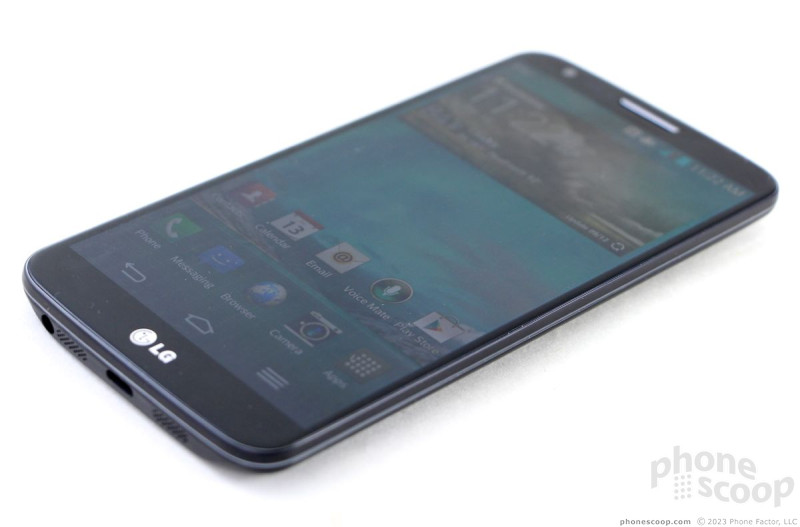



























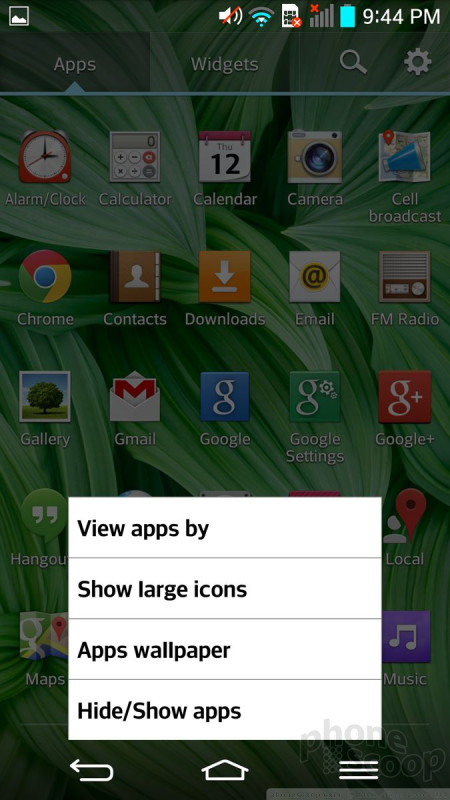








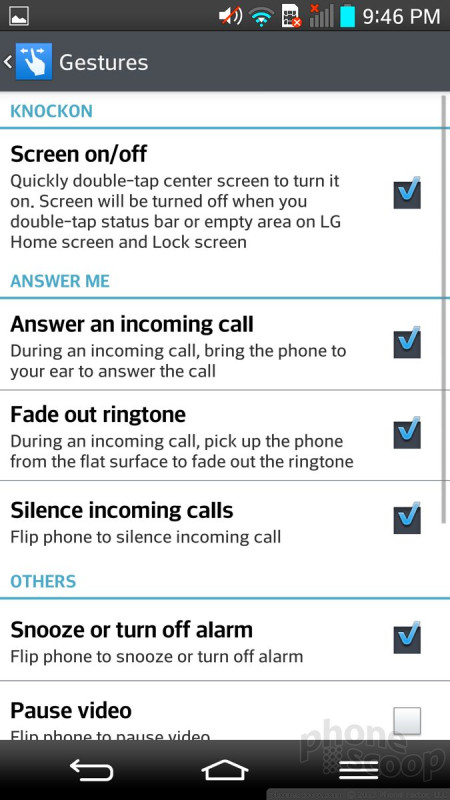


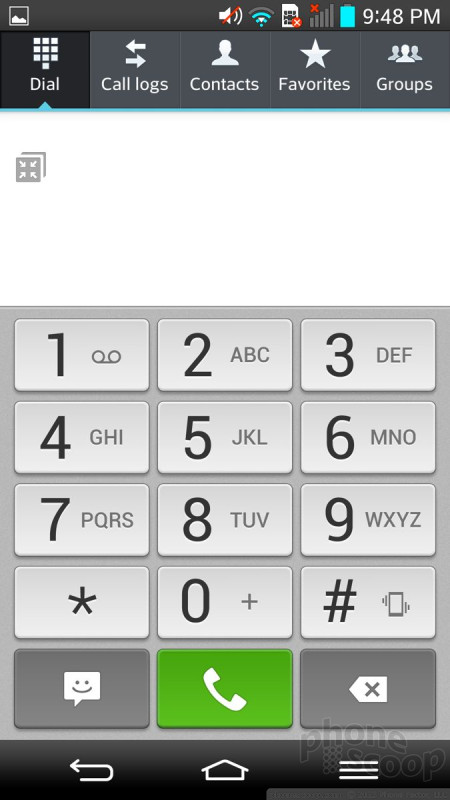





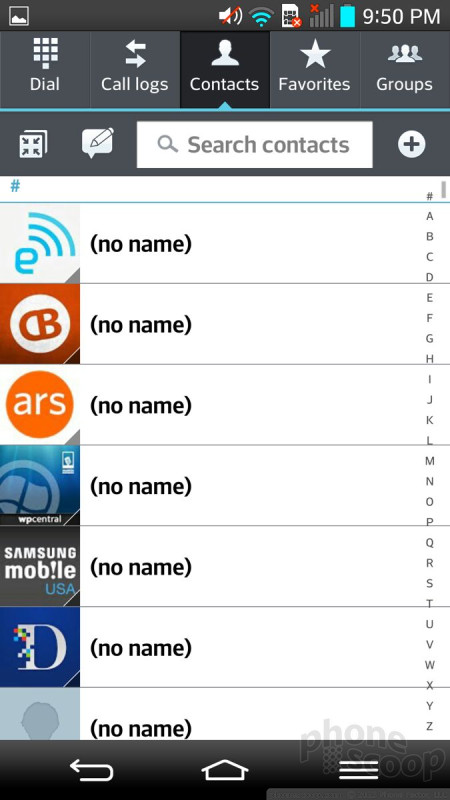





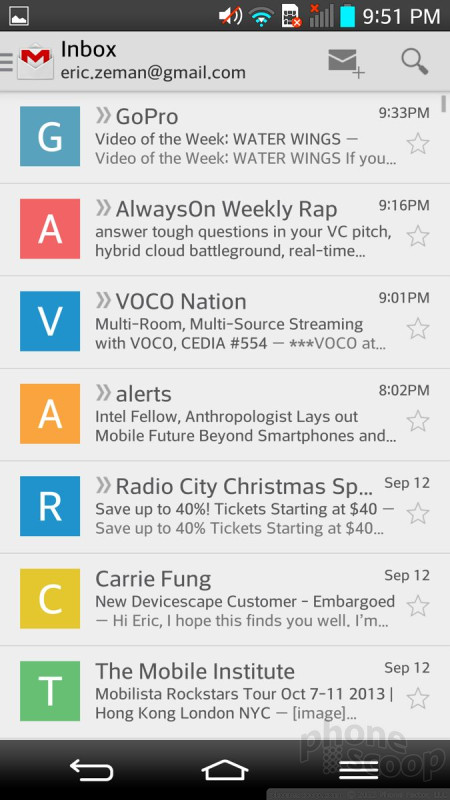






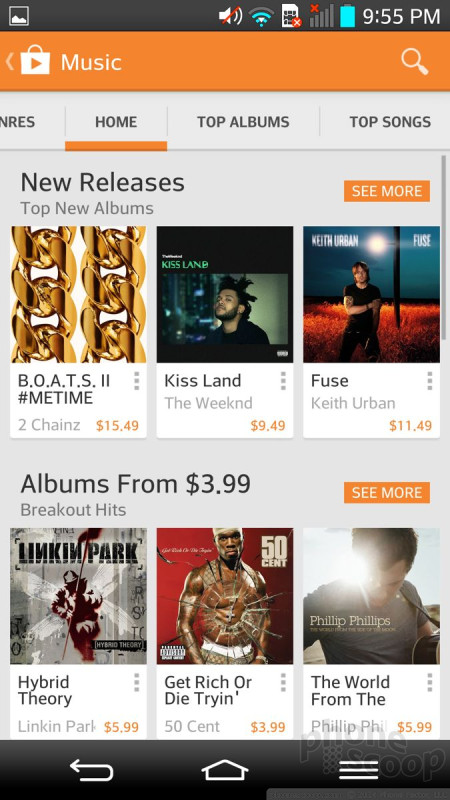





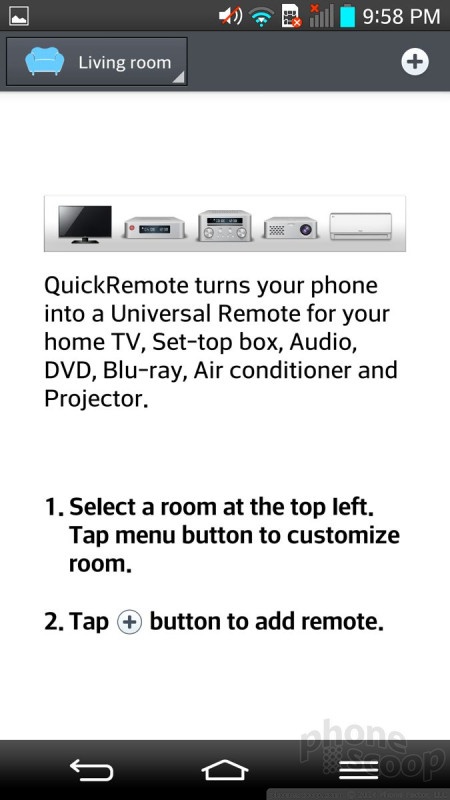






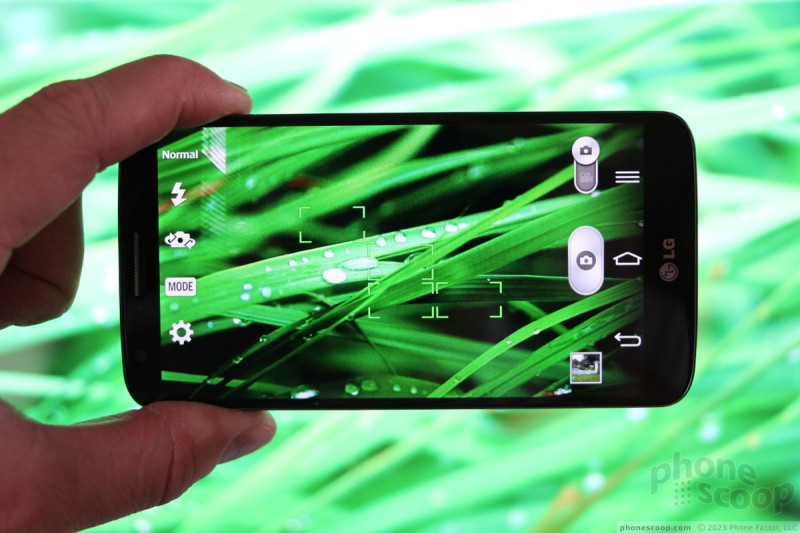




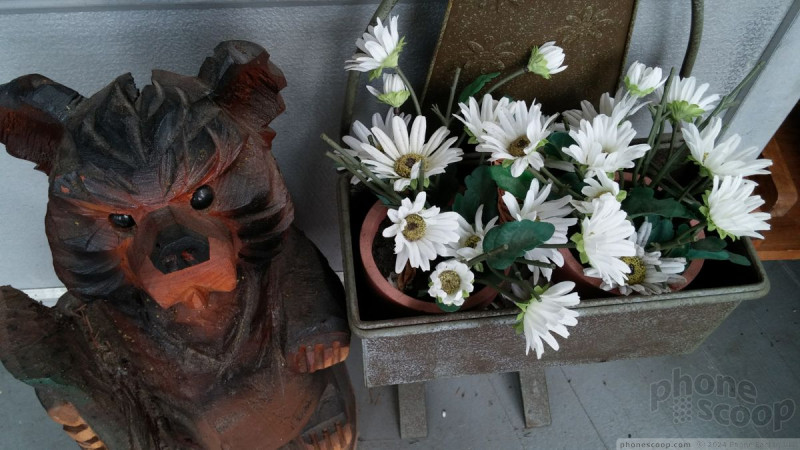


















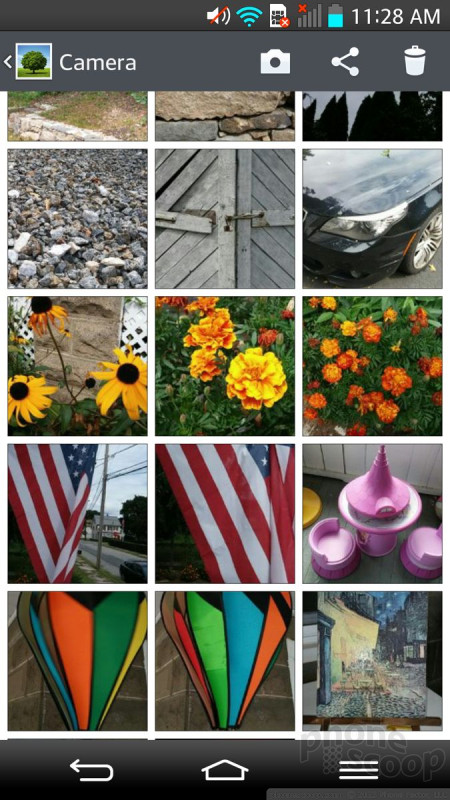





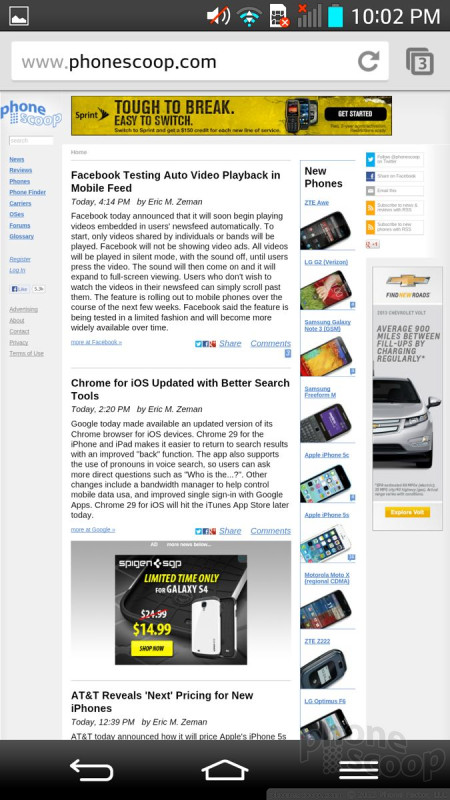




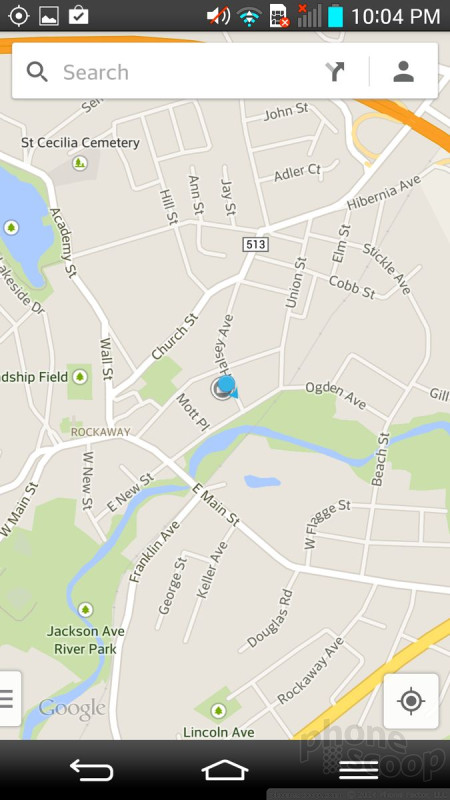



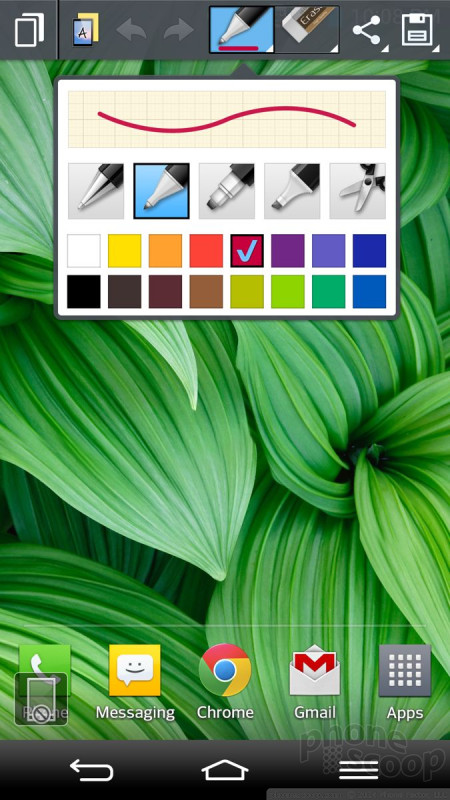



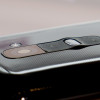 Hands-On: LG G2
Hands-On: LG G2
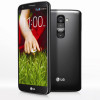 LG G2 Boasts 5.2-Inch Screen, Snapdragon 800 Processor
LG G2 Boasts 5.2-Inch Screen, Snapdragon 800 Processor
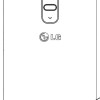 LG G2 Approved By FCC
LG G2 Approved By FCC
 LG G2 (GSM)
LG G2 (GSM)












